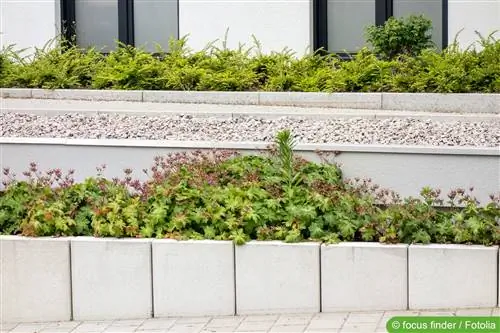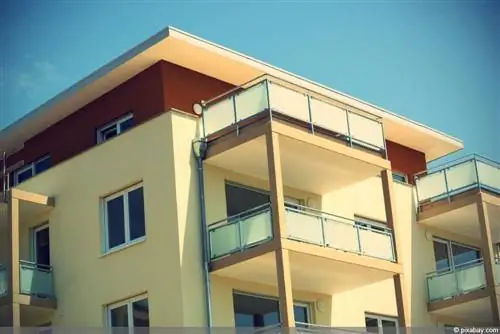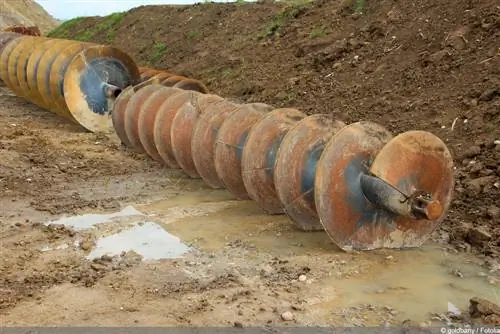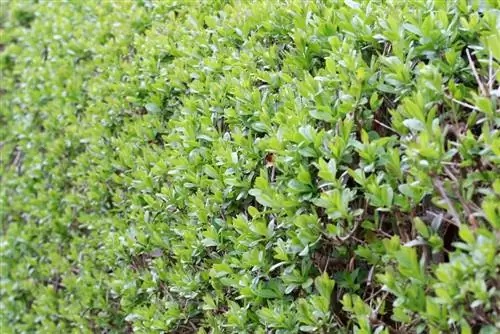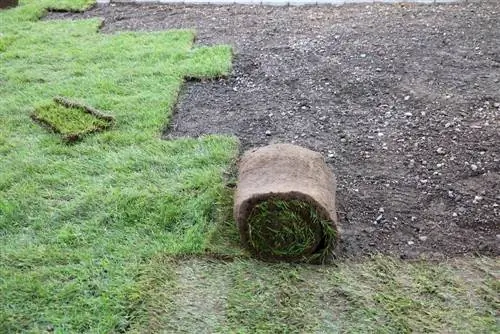- Author admin [email protected].
- Public 2023-12-17 03:39.
- Last modified 2025-06-01 06:48.
Making slope fortifications or borders from L-stones is one of the more demanding property projects. While you can certainly build smaller fortifications yourself, supports for large amounts of earth should be built by specialist companies. We explain what you need to pay attention to and what costs can be expected.
L-stones are used in gardening and landscaping as supporting elements in the form of slope fortifications, boundaries or walls. In this article, property owners can find out what costs they should expect when setting up.
How to set L-stones
Setting L-stones is quite technically demanding and requires thorough and accurate preparatory work. In addition, large weights have to be moved and adjusted to within a few millimeters. If the result is ultimately unsatisfactory, it can only be corrected with extraordinary effort. Ambitious do-it-yourselfers who want to tackle such a project on their own should carry out the following steps carefully and, if they are unsure, do not hesitate to ask a specialist for advice.
Required materials
- Formwork boards, supports, nails
- Gravel, sand or gravel as fill for drainage
- Concrete of production class C16/20
- Wall mortar
- L stones of appropriate size
- Bitumen waterproofing
- Drainage pipe if necessary
- if necessary drainage fleece
Required Device
- Work safety equipment (hearing and vision protection, dust mask, work gloves, safety shoes, etc.)
- Guideline with string iron
- Stead
- Spirit level
- Screwdriver
- Hammer
- Spade
- Shovel
- (Mini) excavator designed according to the dimensions and weights of the components
- Earth rammer or, if necessary, vibrating plate
- Screw clamps as temporary handles for the elements
- lifting slings sufficient for the weight of the L-stones
- Angle grinder with diamond cutting disc
- Spatula, trowel or similar
Tip:
Once a certain amount of concrete is required, it makes sense not to mix it on site at the construction site, but to have it delivered “ready to use” as ready-mixed concrete.
Work sequence
- Tighten the guide line according to the planned route of the edging.
- Generous excavation along the guidelines of the dimensions of the L-stones to be placed and taking into account frost-free foundation (80 cm depth) and additional depth for the drainage layer and the foundation.
- Construction of formwork to keep the shaft free of any soil that may slide in.
- Leveling and, if necessary, compacting the shaft bottom.
- Introduce and compact the drainage layer.
- Pour and compact the concrete foundation and then let it harden for a few days.
- Remove formwork from the foundation.
- Tightening the guide line at the planned level of the upper edge of the L-stones.
- Place the first L-stone in masonry mortar, compensating for height differences where necessary using a thicker layer of mortar in places.
- Where necessary, cut stones with an angle grinder and diamond cutting disc.
- Leave 5 to 10 mm expansion joints open between the elements.
- Accurate alignment and checking of the position and alignment of each stone immediately after placement.
- Close expansion joints with bitumen sealing.
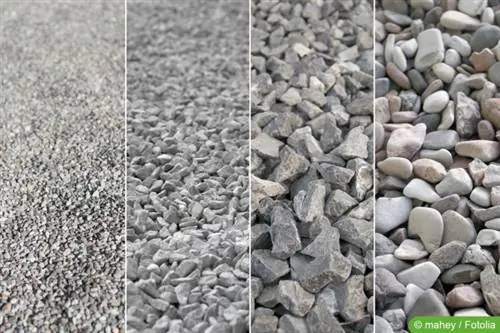
Tip:
If the planned edging goes around one or more corners, you can use special corner elements from specialist retailers. This saves you the hassle of cutting and fitting the stones for the corner positions.
Rear protection measures
Note:
The following work on the back of the newly built enclosure is not absolutely necessary. However, the measures prevent seepage water from accumulating on the elements. This means the wall is better protected against any moisture and frost damage that may occur.
- Apply a concrete layer with a gradient on the horizontal leg of the stones.
- Lay the drainage pipe behind the stones with a slight slope.
- Coat horizontal legs and drainage pipe with gravel.
- Cover gravel layer with drainage fleece.
The fortification is now completely built and the soil to be supported can be added in layers. Each layer should be sufficiently compacted.
Costs - set L-stones yourself
The costs for setting the L-stones yourself vary greatly depending on the size and scope of the project. Assuming that most of the necessary tools are available and that wood and screws for the formwork are also available, then the financial framework is limited to the materials and the rental costs for a (mini) excavator.
Basically, the price range for L-stones ranges from under 10 EUR to over 200 EUR. But it can also be done exclusively. For example, if a more elegant look and surface is desired, a single stone in the appropriate design can cost more than 300 EUR.
L-stones: price per element depending on size
- 50 x 50 x 30 x 7 cm unreinforced approx. 20 EUR
- 80 x 50 x 50 x 7 cm unreinforced approx. 35 EUR
- 55 x 100 x 30 x 12 cm reinforced approx. 100 EUR
- 80 x 100 x 45 x 12 cm reinforced approx. 140 EUR
- 130 x 100 x 70 x 12 cm reinforced approx. 200 EUR
The prices listed above refer to L-stone elements with a gray concrete surface.
More posts
- Gravel for drainage: Approx. 130 EUR per ton depending on grain size and quantity ordered, plus delivery if necessary
- C16/20 ready-mix concrete: Approx. 130 EUR per cubic meter
- Masonry mortar: 6 EUR to 10 EUR per 40 kg bag
- Bitumen waterproofing: Approx. 50 EUR per 30 kg bucket
- Drainage pipe if necessary: 2 EUR to 3 EUR per linear meter
- Drainage fleece if necessary: 0.50 EUR to 2.50 EUR per linear meter
- Rental excavator: Depending on size 100 EUR to 250 EUR per day plus diesel and delivery/collection
All prices stated are to be understood as end consumer prices including VAT and may vary depending on the provider.
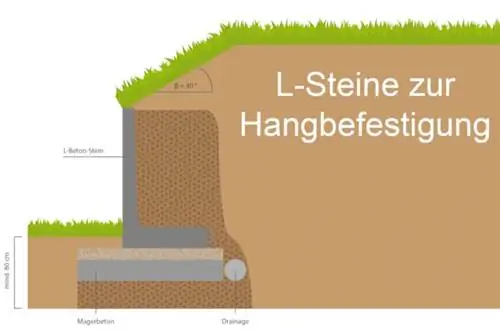
It is worth getting offers from various hardware stores and building materials dealers to determine the best price-performance ratio.
Costs - having L-stones set
If you consider the great effort that is required to set L-stones adequately, then it makes sense to consider having this work carried out by a specialist company. This is especially true for stones of a certain size.
The costs for having the L-stones set depend on the material required and the effort and working time involved. In any case, it makes sense to get offers from several companies. This way you have a good comparison and can choose the offer with the best price-performance ratio.
As a first guide, you can initially expect prices of 100 EUR to 400 EUR per linear meter of L-stone fastening.

